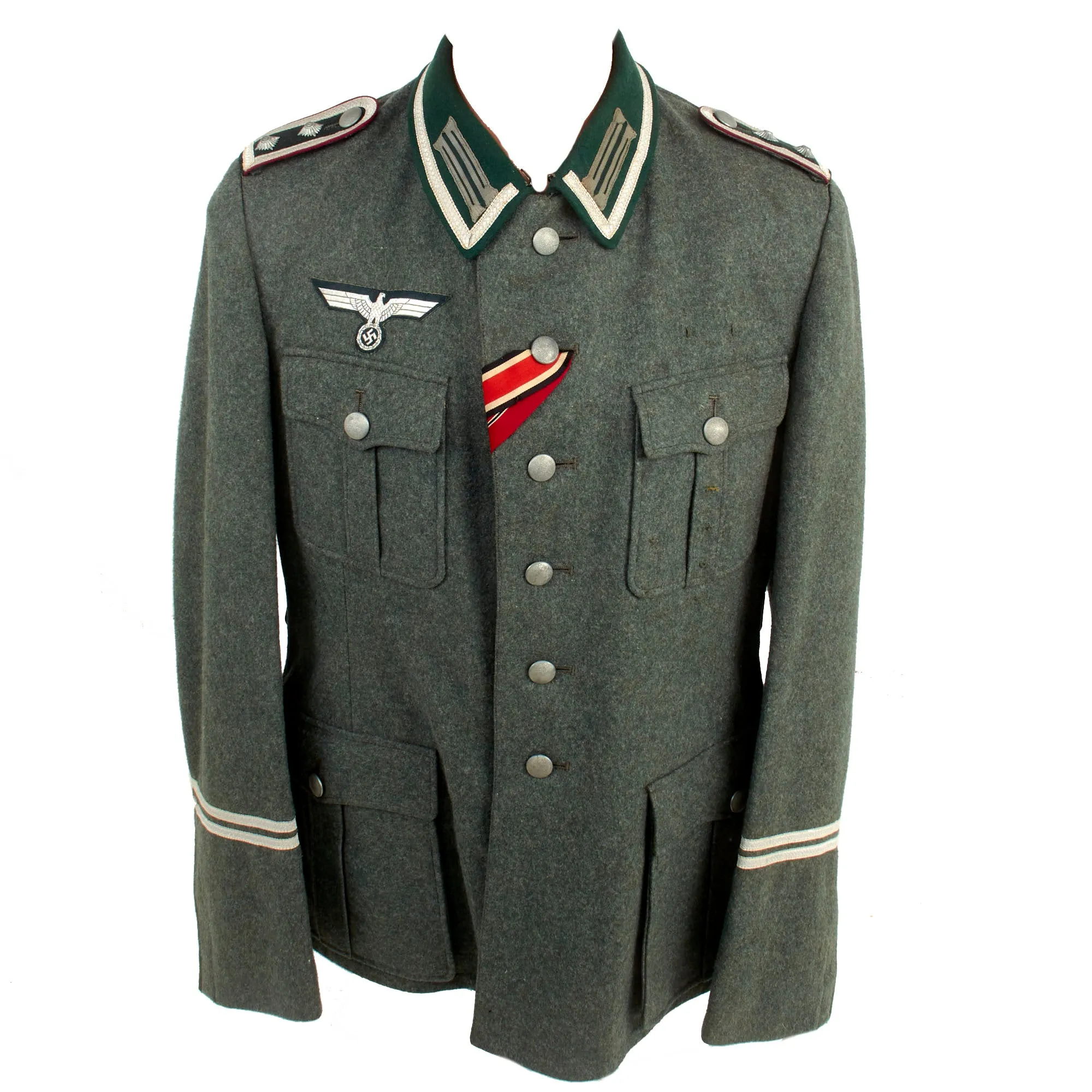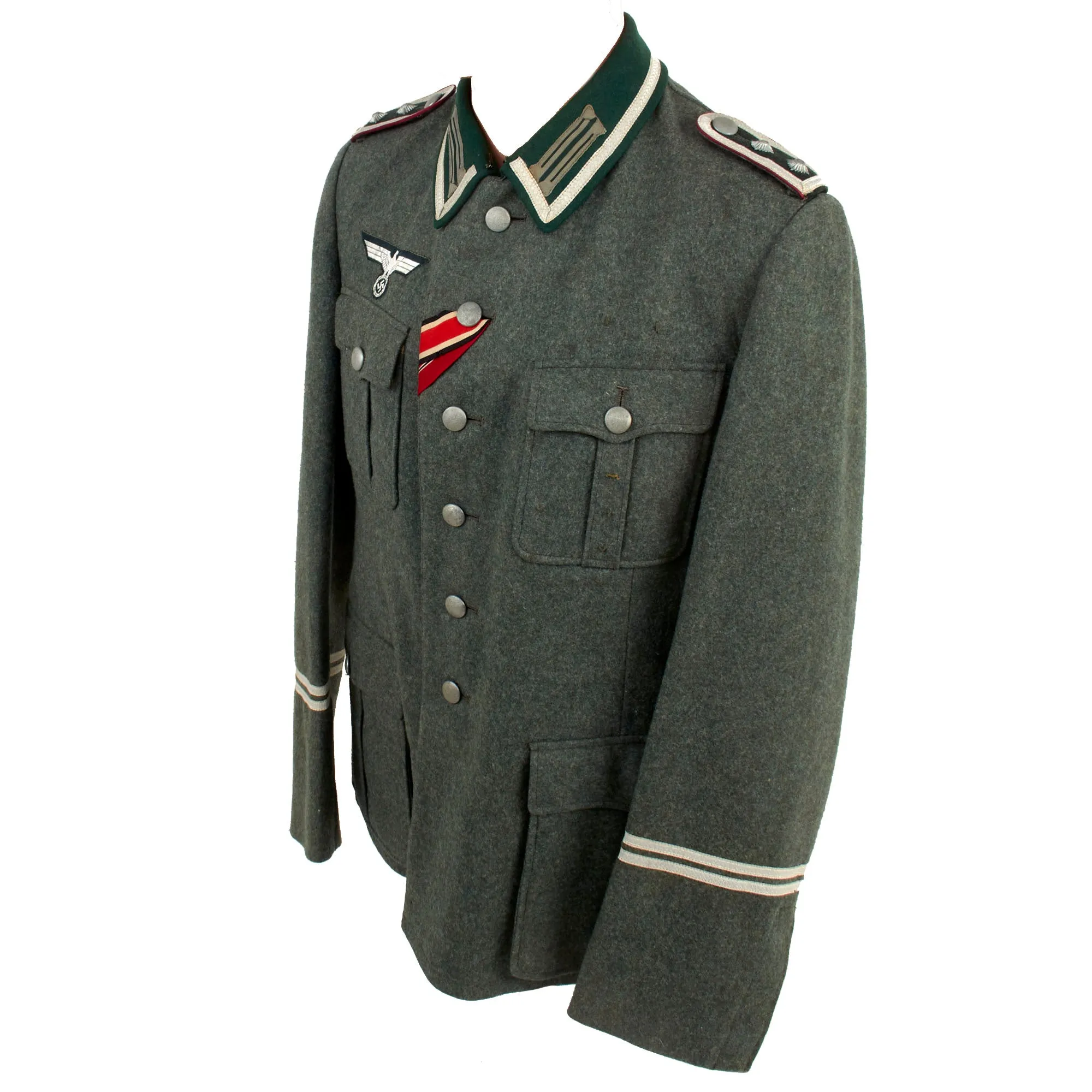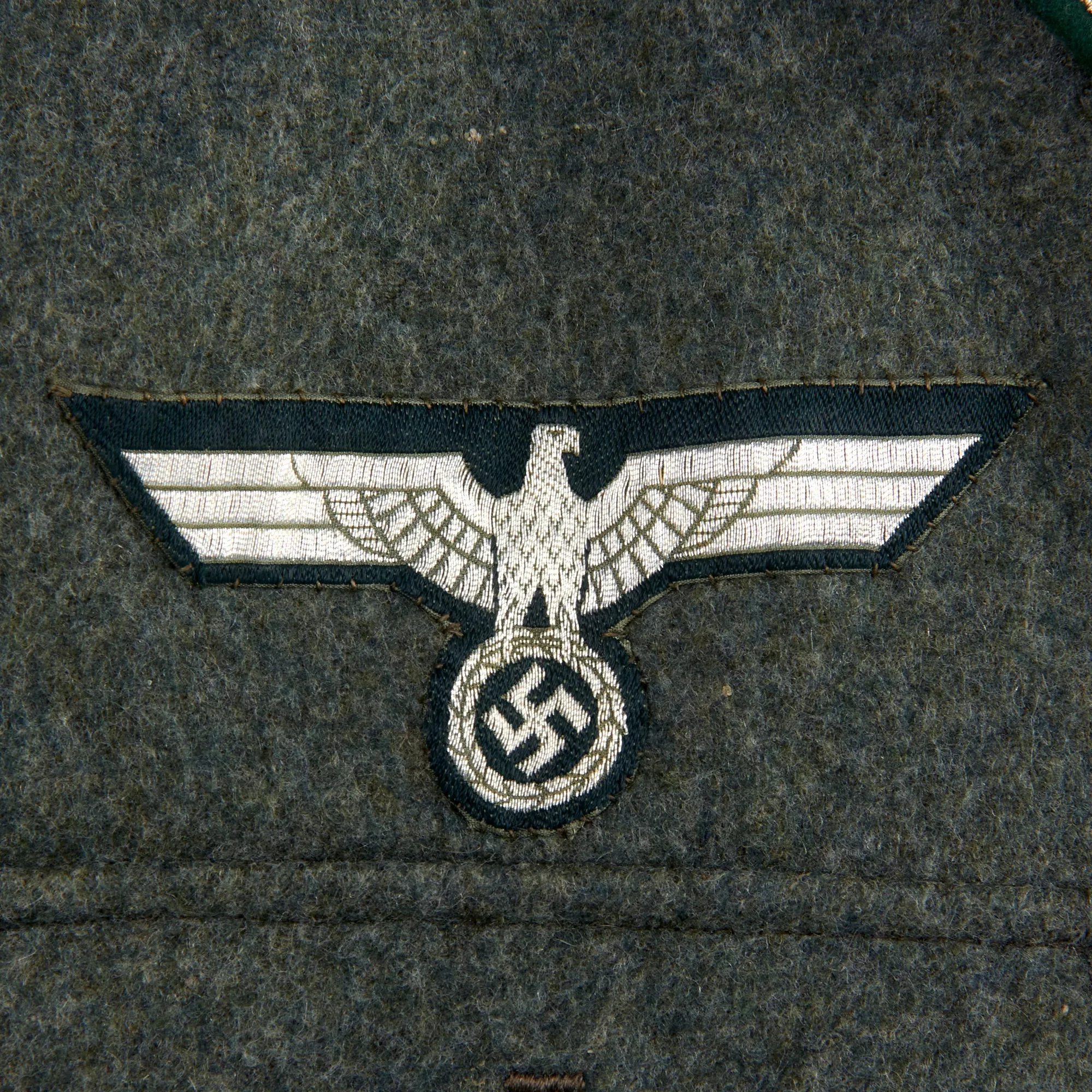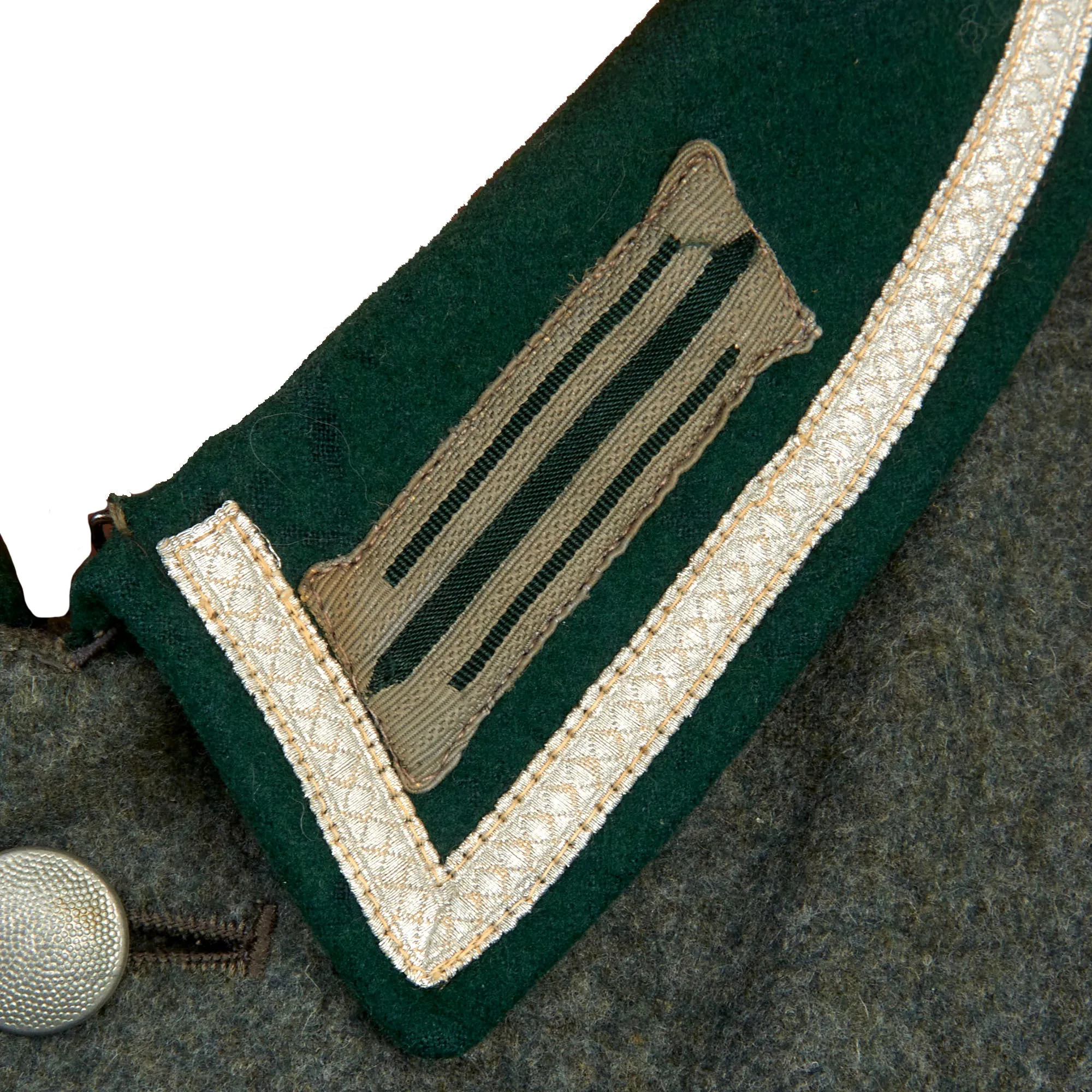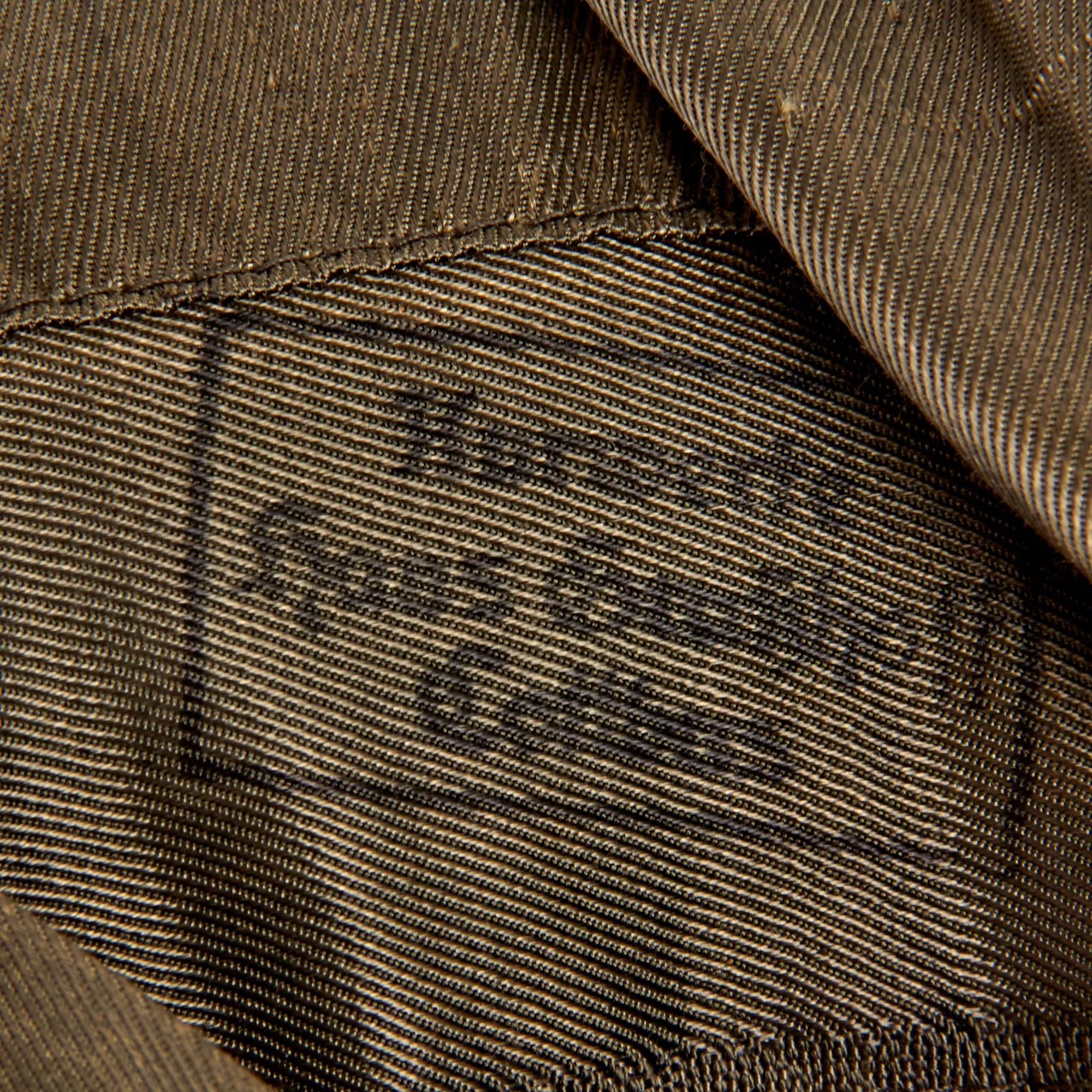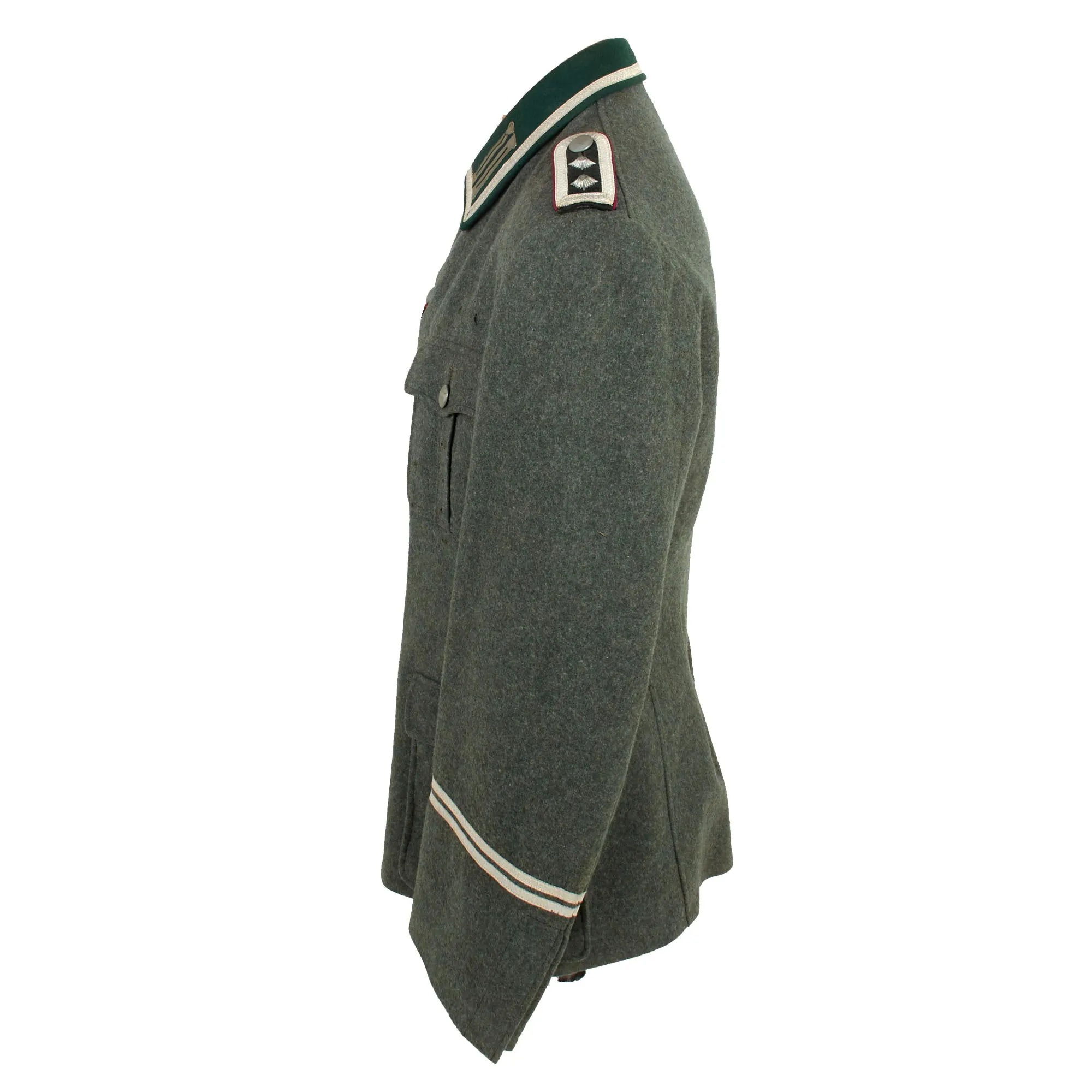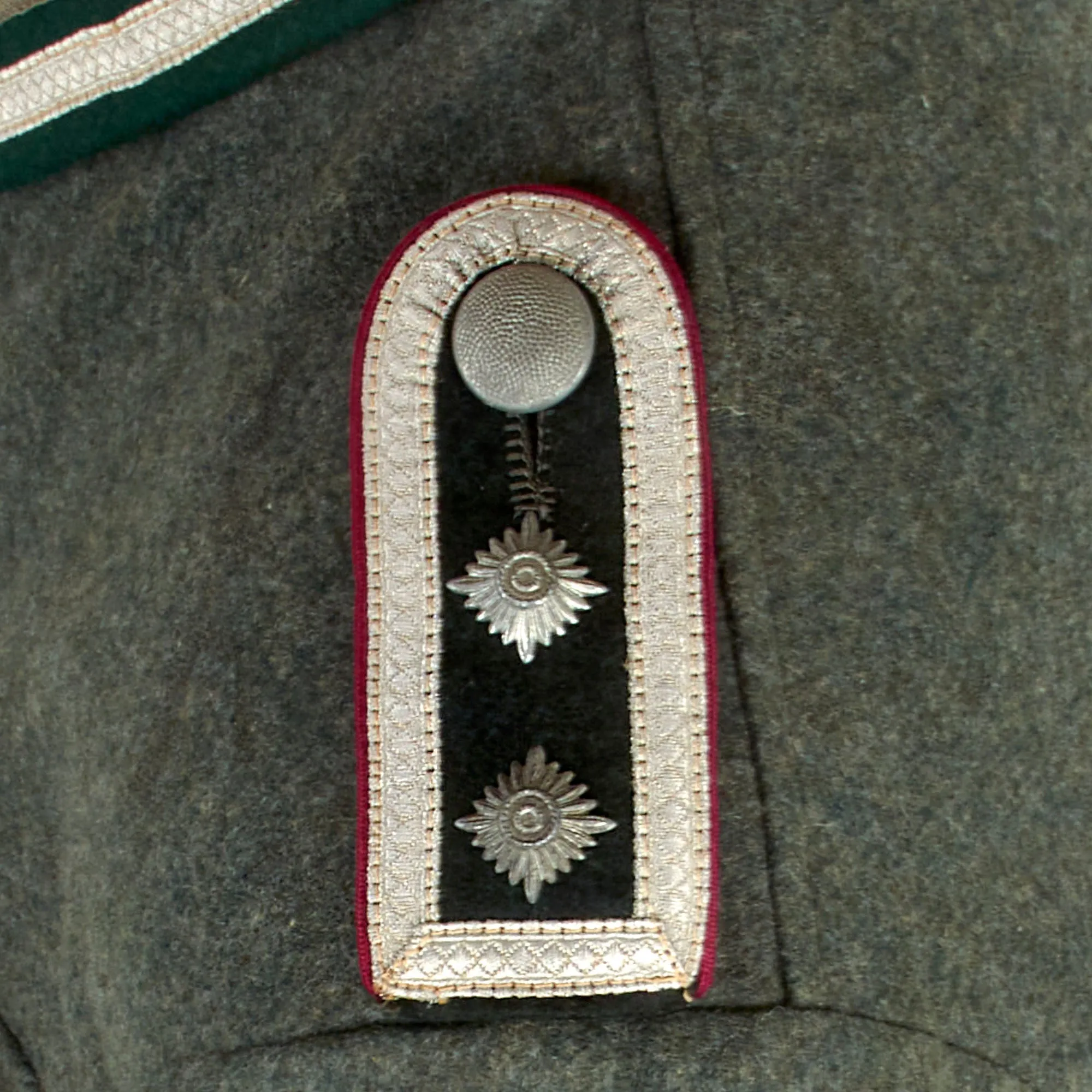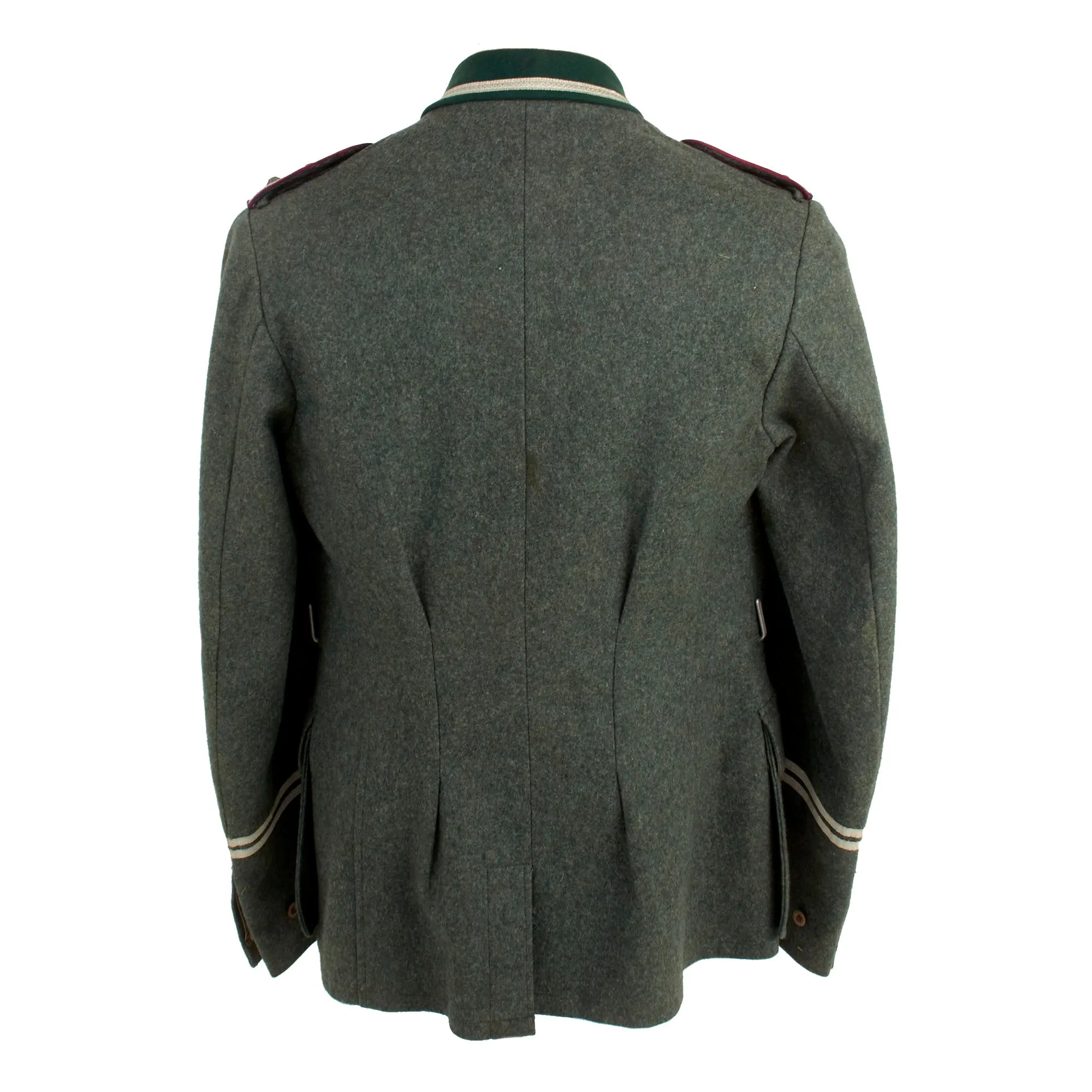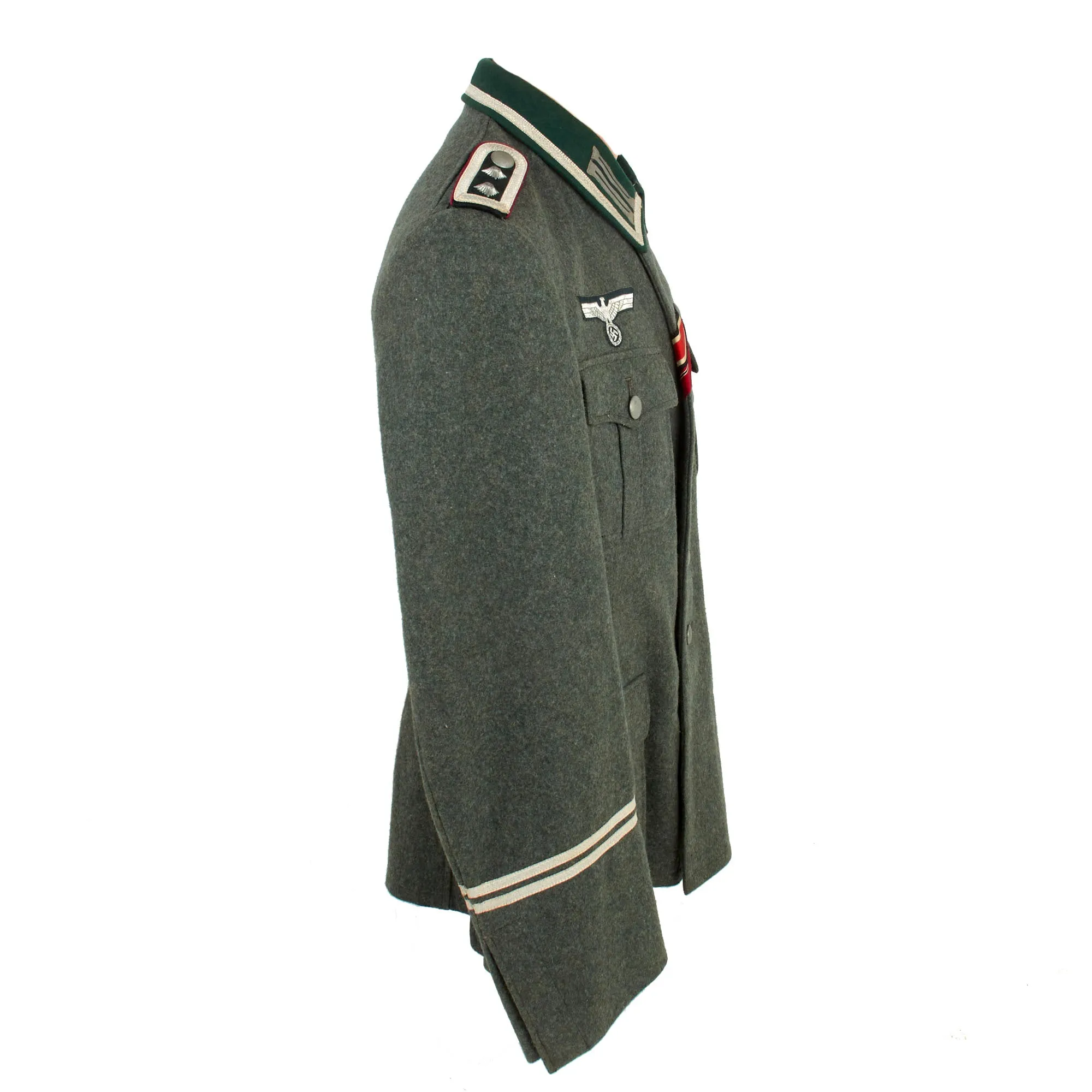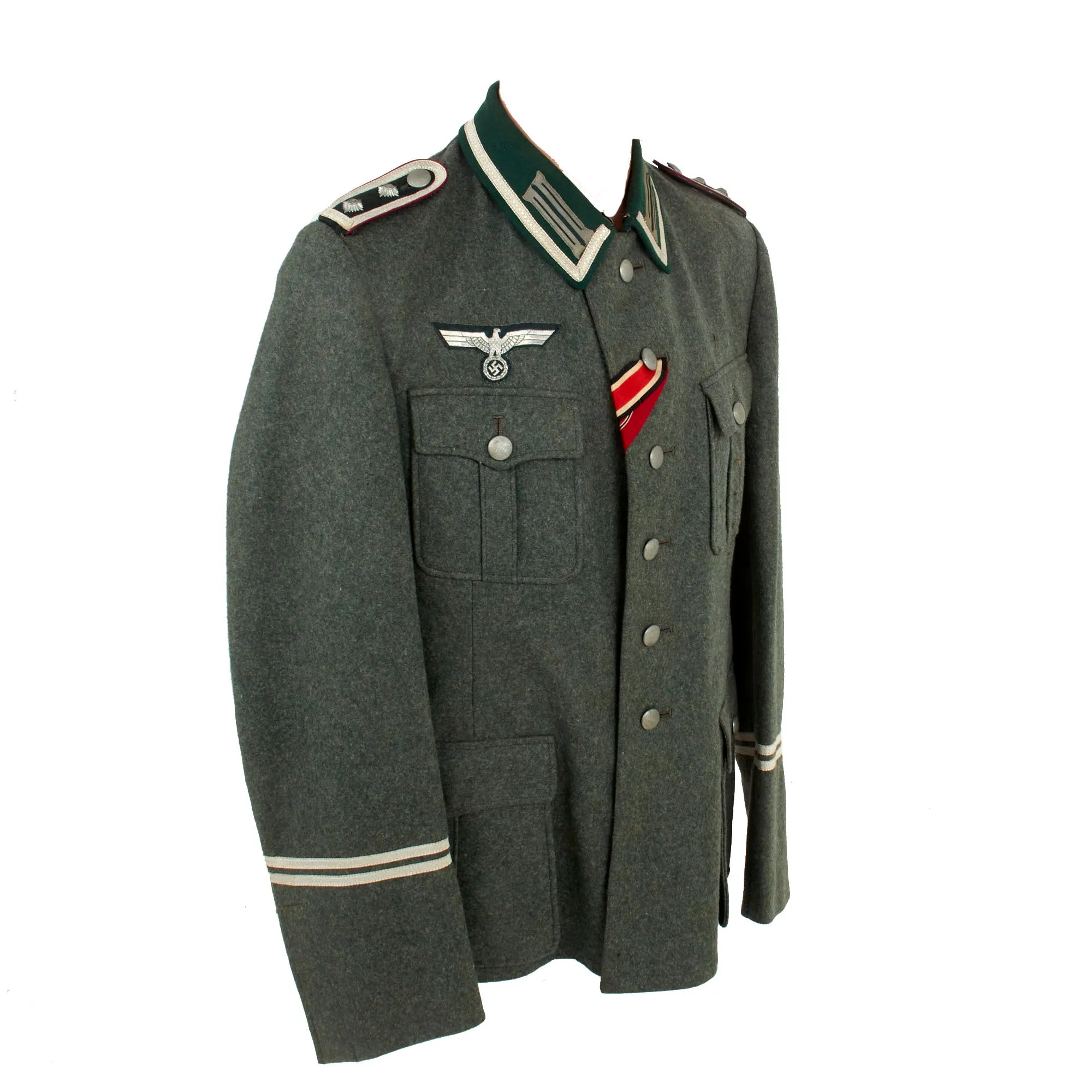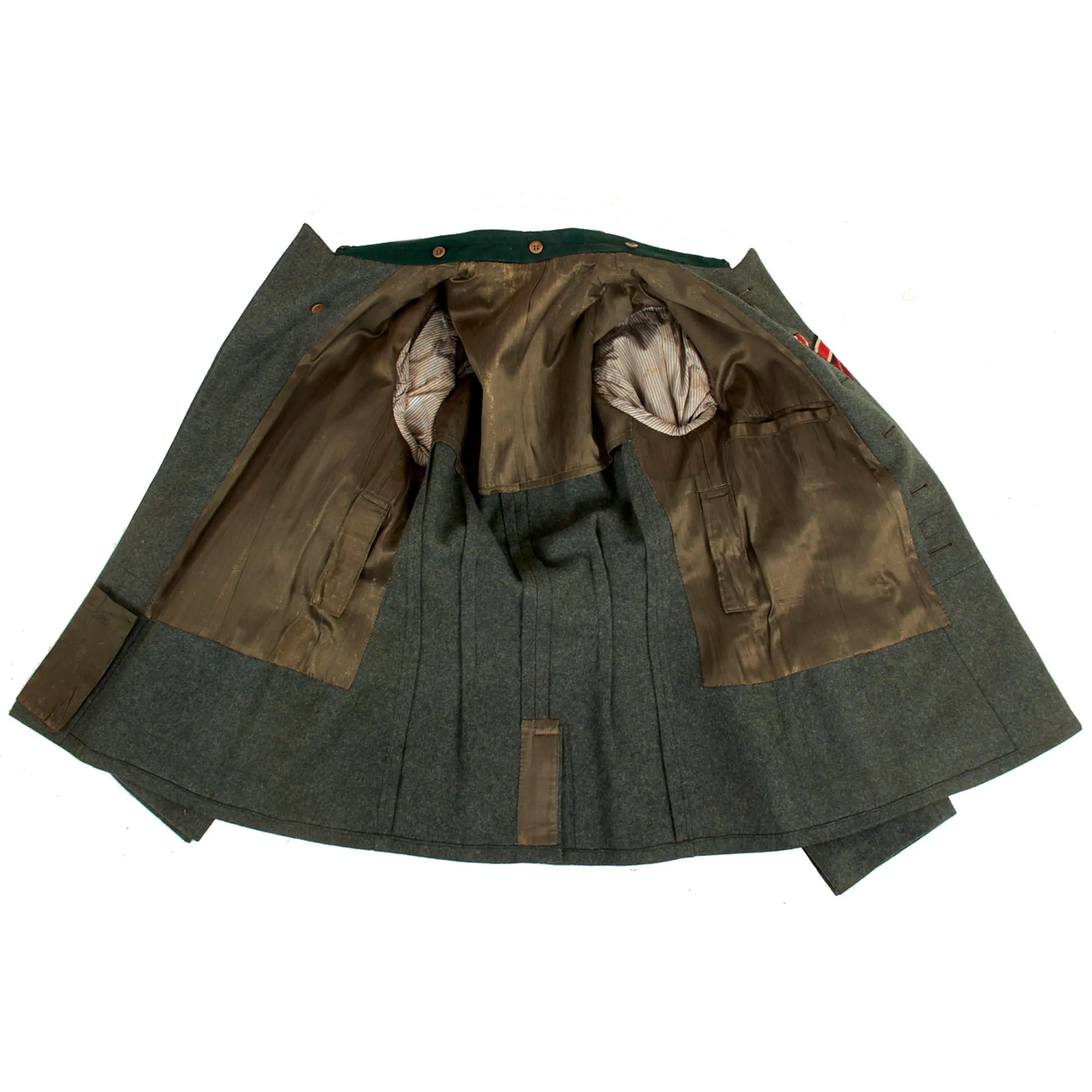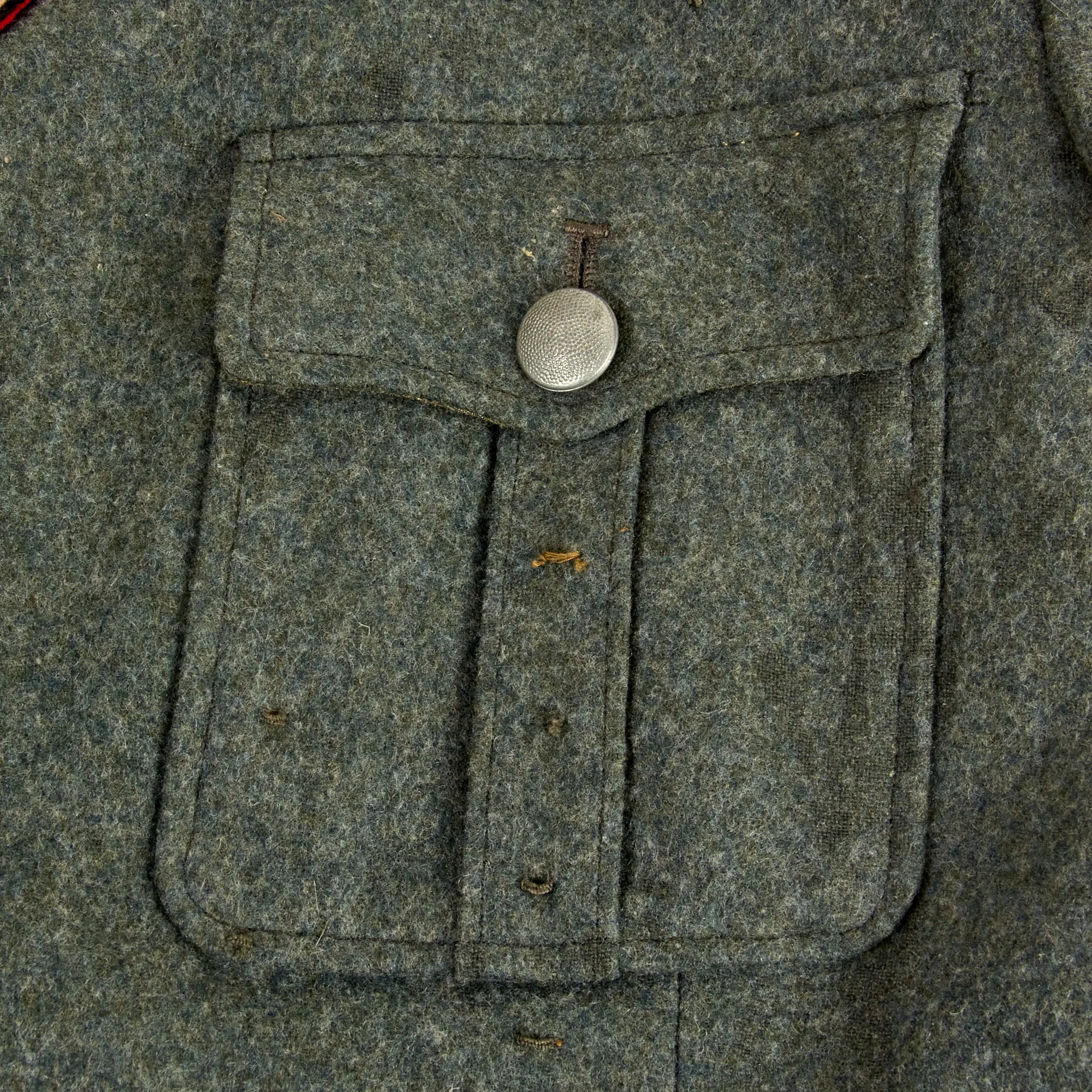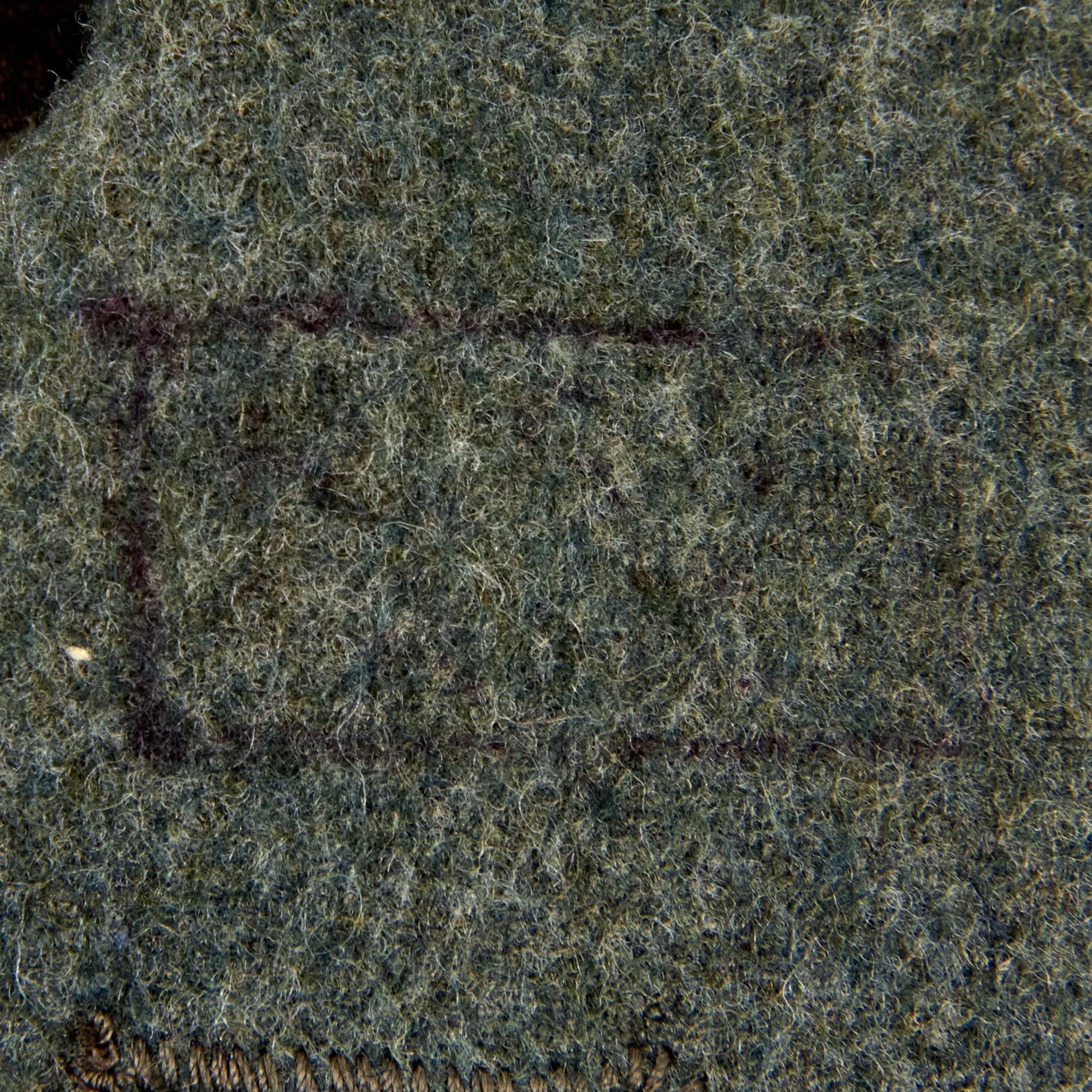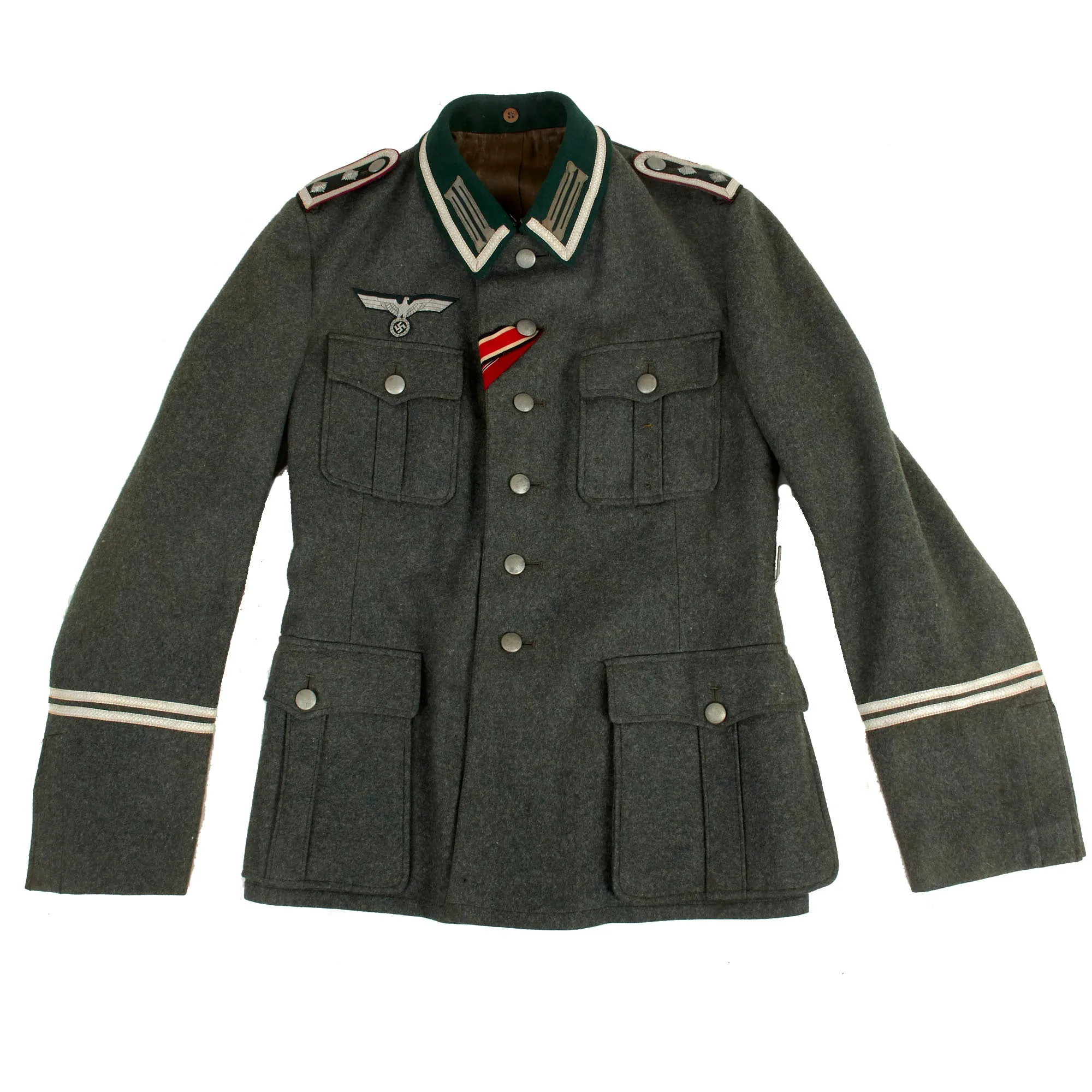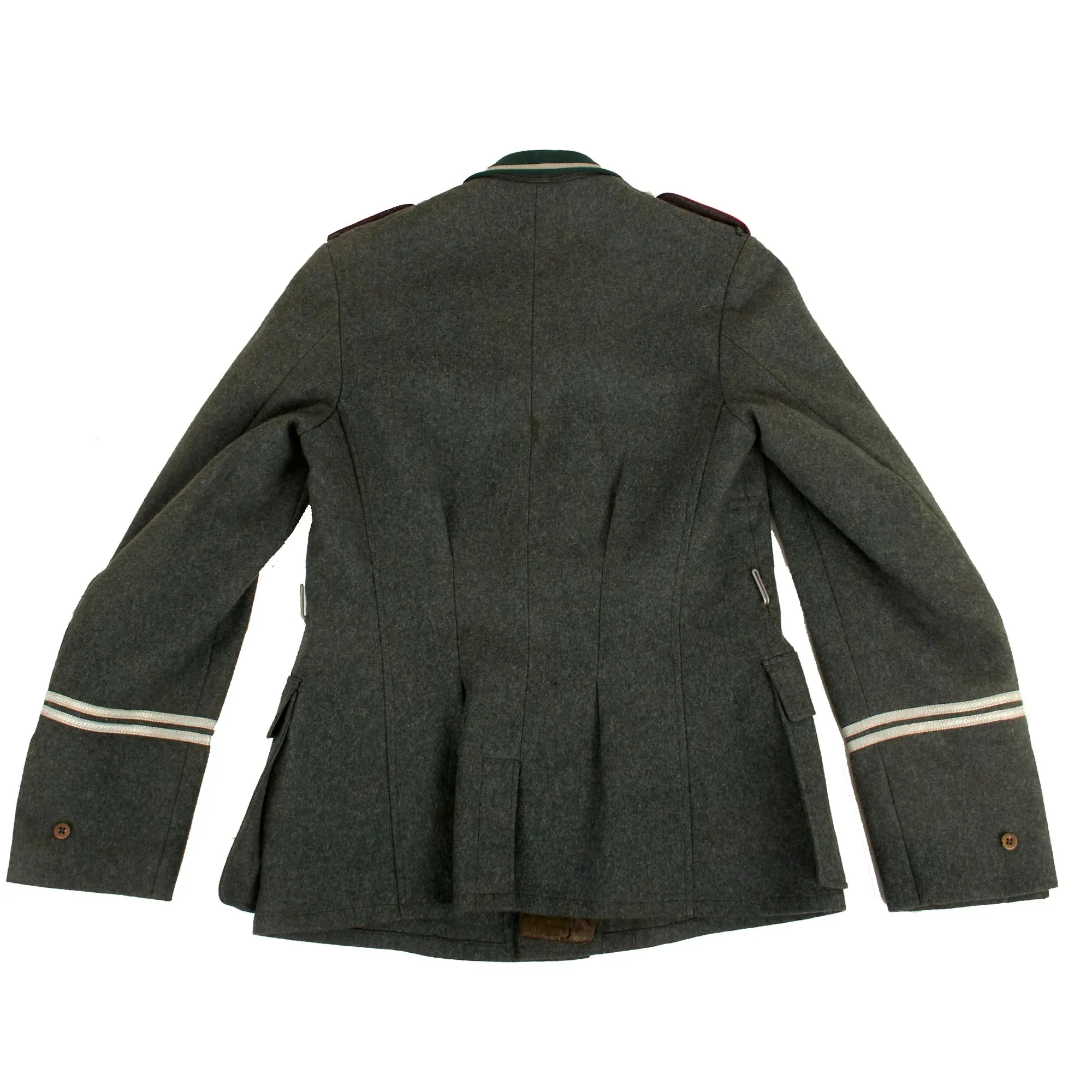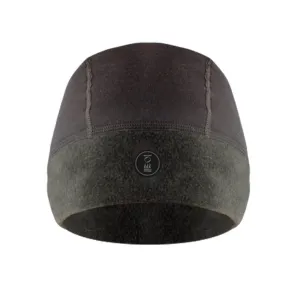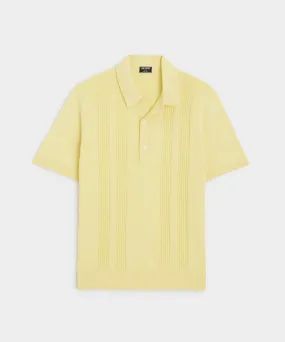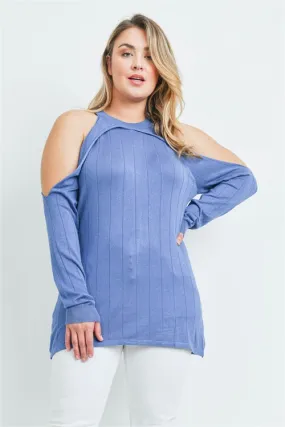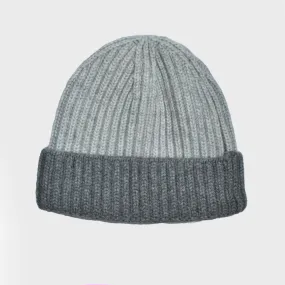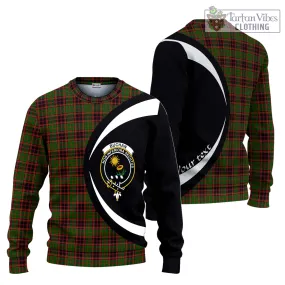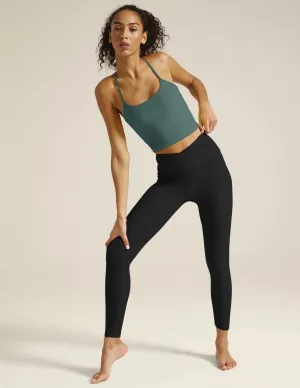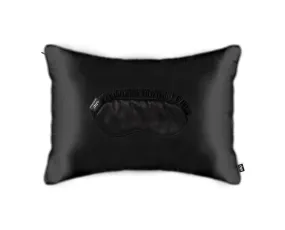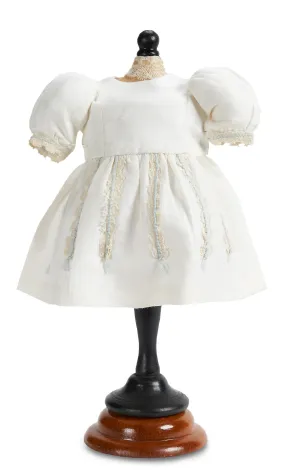Original Item: Only One Available. This is a very nice early war pattern German WWII Heer Army Smoke & Chemical Troops Unteroffiziere mit Portepee (Senior NCO) M-36 Field Tunic, showing some service wear and in nice untouched condition. The tunic does show a stamped maker mark inside the left inner pocket, which looks to read
Kurwerke
Hans Graßhoff
Cottbus
It is in German "Blackletter" typeface, so unfortunately we are not sure about the correctness of our reading. We were not able to find any other markings inside the tunic, which is partly lined with olive green rayon. The sleeves are lined with striped lightweight cotton fabric.
The tunic features four pockets with scalloped flaps and pebbled magnetic buttons, which look to be made from galvanized stamped steel with zinc alloy backings and eyelets. The front closure features 6 of the same buttons on the right breast flap meeting an equal number of reinforced buttonholes on the left flap. There is also a hook and loop collar securing fastener, which is fully functional. The buttons all appear to be marked EXTRA FEIN on the back, however we cannot find any maker markings, and they are all sewn directly to the fabric.
It is adorned with the usual rank and branch insignia used on German tunics, neatly hand and machine stitched in a fashion typical of wartime German tailor work. The attractive Army breast eagle is the correct NCO BeVO silver bullion embroidered type, and is very neatly hand stitched to the chest, though only to the outer lay of fabric, as is correct. The collar is wrapped in a dark-green wool, and is decorated a strip of 9mm flat silver-grey woven rayon braid (Unteroffoziers-Tressen), sewn around the collar border.
There are EM/NCO litzen collar patches on each side, which are machine woven from grey thread with a dark green background matching the collar, which is the 1938 pattern, which switched to a black background in 1940. They do not have Corps Color stripes, as in 1938 they were removed from EM/NCO collar insignia to save time. The collar, and its insignia, are without any noticeable damage or mothing.
The button attached style NCO shoulder straps (Unteroffiziere Schulterklappen) attached to the tunic have a field gray wool base, however they are also in the early style, with a dark green cloth top layer. They feature a silver diamond-woven tress border all the way around, with two silver rank "pips", indicating the NCO rank of Oberfeldwebel, an NCO rank equivalent to a U.S. Army Master Sergeant. The piping around the shoulder straps is bordeauxrot (Bordeaux Red), which was the Waffenfarbe (corps color) during WWII for the Heer Nebelwerfer (Smoke Thrower) Rocket and Chemical Troops.
The bottoms of the both arms have two NCO Tresse "Piston Rings", indicating that the wearer held the position of Hauptfeldwebel (First Sergeant), which was not a rank but an administrative title, meaning they were in charge of helping the commander muster the company.
This position was usually given to an NCO of Oberfeldwebel rank, as in this case. The second buttonhole from the top on the tunic has the ribbons for the EKII and Eastern Front medal installed. There are also some thread loops above and on the pocket underneath, so there was probably a medal bar and some awards that the German soldier removed, probably to put on another uniform.
Overall condition is very good, and shows only light wear on the exterior, with some areas of light mothing. The inside rayon lining shows light wear as well, and the tunic does not look to have seen excessively long service during the war.
A very nice and hard to find Early War German WWII Smoke & Chemical Troops NCO's M36 Field tunic, ready to outfit with medals and display!
Approximate Measurements:
Collar to shoulder: 9.5"
Shoulder to sleeve: 28.5”
Shoulder to shoulder: 15.5”
Chest width: 18"
Waist width: 18"
Hip width: 23"
Front length: 31.5"
Terms such as M40 and M43 were never designated by the Wehrmacht, but are names given to the different versions of the Model 1936 field tunic by modern collectors, to discern between variations, as the M36 was steadily simplified and tweaked due to production time problems and combat experience.
Field Tunic (Feldbluse) Model 1936
When the NSDAP came to power in early 1933 the Reichswehr, the armed forces of the Weimar Republic, were near the end of a two-year project to redesign the Army Feldbluse (field-blouse). Beginning in that year the new tunic was issued to the Reichsheer and then the rapidly growing Wehrmacht Heer, although minor design changes continued to be made until the appearance of the standardized Heeres Dienstanzug Modell 1936. The M36 tunic still retained the traditional Imperial and Reichswehr uniform color of grey-green "field gray" (feldgrau) wool, but incorporated four front patch pockets with scalloped flaps and pleats (on Reichswehr tunics the lower pockets were internal and angled). The front was closed with five buttons rather than the previous eight, and the collar and shoulder straps were of a dark bottle-green instead of the Reichswehr grey. Compared to the Weimar-era uniforms the skirt of the feldbluse was shorter and the tailoring was more form-fitting due to Germany's adoption of mechanized warfare: soldiers now spent much time in the confined space of a vehicle and a shorter jacket was less likely to pick up dirt from the seats. It also included an internal suspension system, whereby a soldier could hang an equipment belt on a series of hooks outside of the tunic. These hooks were connected to two straps inside the lining, which spread the weight of equipment without having to use external equipment suspenders. The M36 was produced and issued until the very end of the war, though successive patterns became predominant.
SS field uniforms were of similar appearance externally but to fit their larger patches had a wider, feldgrau collar, and the lower pockets were of an angled slash type similar to the black or grey SS service-dress. The second button of an SS Feldbluse was positioned somewhat lower, so that it could be worn open-collar with a necktie. Due to supply problems the SS were often issued army uniforms.




